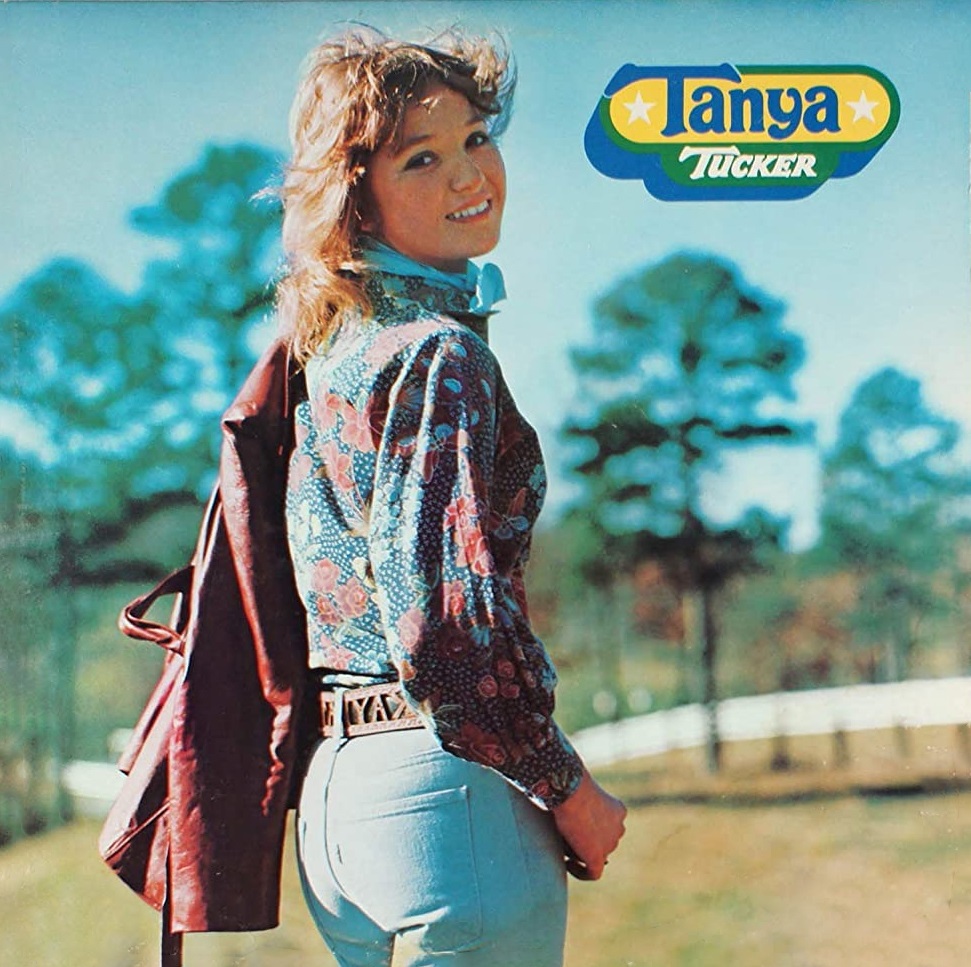45 Years Later: Tanya Tucker’s Self-Titled Album
Only 16 – and already on her fourth album!

Tanya Tucker could still refer to herself as “Sweet 16” when she recorded her fourth studio album, simply titled Tanya Tucker, in early 1975. Tucker, who wouldn’t turn 17 until later in the year, was obviously established enough to release a self-titled album, on the heels of radio hits like her debut (at age 13) “Delta Dawn,” and three consecutive chart-toppers: “What’s Your Mama’s Name,” “Blood Red and Goin’ Down,” and “Would You Lay With Me (In a Field of Stone).” The album was released April 21, 1975.
The Tanya Tucker album followed the path of most country records in the 70s. No real thematic concept – that would be left to Willie Nelson, who released Red Headed Stranger in May of 1975 – but rather a solid collection of songs that would suit the artist’s voice and personality. The album produced two No. 1 singles in 1975, “Lizzie and the Rainman” and “San Antonio Stroll,” both perennial Tucker favorites even after 45 years. Tucker shared some detailed memories of the album’s recording with Sounds Like Nashville, providing a slice of historical perspective in her best Tanya-esque manner.

A FEW “FIRSTS”
A string of “firsts” was associated with this record, as Tucker explains. “It was my first album for MCA Records after leaving Columbia Records and my first producer, Billy Sherrill,” Tucker recalls. “It was also the first time I ever recorded in Los Angeles. We did the album at Larrabee Studios in Santa Monica.” As a side note, that studio was originally purchased by the legendary hit songwriting team of Gerry Goffin and Carole King.
Tucker’s first three albums were helmed by the prominent producer Billy Sherrill, famed for his recordings with Tammy Wynette, George Jones, and Charlie Rich. For her 1975 album, she worked with Snuff Garrett, better known in the world of pop as the producer for Cher, rock group Gary Lewis & the Playboys, and others. Garrett also produced Vicky Lawrence’s “The Night the Lights Went Out in Georgia,” a No. 1 pop hit in 1973. The Tucker-Garrett teaming, however, turned out to be a short-lived one. Chalk it up to perhaps creative differences.
“This was the only album I made with Snuff Garrett,” Tucker says. “The song ‘Lizzie and the Rainman’ went on to become a No. 1 record, and ‘San Antonio Stroll’ was also No. 1 off that album. But I wasn’t fond of the way Snuff worked in the studio, because he worked so fast. So, I ended up going back to Nashville to make the next record with [the producer] I would be with for 13 albums, Jerry Crutchfield.”
In a past interview, Tucker pointed to the recording of “Lizzie and the Rainman,” stating that the session felt “impersonal” to her because she sang to tracks instead of a complement of live musicians. But it wasn’t a complete downer, as Tucker happily relates to Sounds Like Nashville. “I distinctively remember when I was doing the final vocal on ‘Lizzie and the Rainman,’ I looked into the control room from the studio and I saw Roy Rogers standing by my dad and Snuff Garrett,” Tucker fondly recalls. “And I thought, my dad must be in heaven standing next to the King of the Cowboys, his childhood hero.”
Garrett’s pop-oriented touch was prevalent throughout Tucker’s album. The lavish production behind “Lizzie and the Rainman” seemed particularly suited for an artist like Cher, not surprising as co-writer Kenny O’Dell once revealed that the song was sent to Garrett precisely for the pop princess. But Cher never recorded it. The Billboard review of the album even noticed that, “From time to time, the phrasing [on several songs] sounds a bit like Cher’s.” The review added that the album contained a nice mix of country, country-tinged pop and straight pop, then surmising, “With the intent obviously to keep her country but break her pop.” The album, though, achieved no such crossover success, faring better in country where it landed at No. 8 on the Billboard Hot Country LP’s (as it was known then) chart while barely making a dent on the pop list. The single “Lizzie and the Rainman” did mildly well on the pop charts, peaking at No. 37.
THE CUTS
The third single from Tanya Tucker, following “Lizzie and the Rainman” and “San Antonio Stroll,” was “Traveling Salesman,” released in late 1975 but failing to chart. There were other gems to be mined from the album, though, beyond those first two hit singles. “The King of Country Music” told the poignant tale of an aging country star who has paid more than his share of dues. Tucker, despite her youth, gave this a moving rendition, sounding just as battle scarred as the song’s hero. “I dedicated that to my buddy Ernest Tubb,” Tucker tells Sounds Like Nashville.
Tucker sounded equally convincing on a couple of cover tunes. Her reworking of “When Will I Be Loved” followed the rhythm pattern of Linda Ronstadt’s version, though leaning more heavily on keyboards than grinding guitars. The team must have worked that one up fairly quickly, as Ronstadt’s single wasn’t released until March of 1975 and Tucker hit the studio in April. Tucker added the right mixes of funk and spunk to her version, and here’s a fun little side snippet: the song’s writer Phil Everly of The Everly Brothers sang background vocals. She’s also fully credible and at her storytelling best on “Son of a Preacher Man,” another selection that would seem more appropriate in the hands (and pipes) of a full-fledged adult. Tucker’s handling of Jessi Colter’s “I’m Not Lisa” proved decent enough, while still paling in comparison to the original.
THE COVER AND THE LEGACY
If you find yourself struck by the album’s cool cover, you wouldn’t be alone. Tucker is right there with you. “I loved that cover,” she raves, “because I had a belt on with my name, just like in the Bellamy Brothers song [“Redneck Girl”]. Redneck girls wear their name on the back of their belts. We did the cover and the back cover pictures in Little Rock, Arkansas.”
As far as the album’s legacy, Tanya Tucker provided a glimpse into an artist who, at an age where she could barely get a driver’s license, sounded perfectly comfortable in a recording studio. The ease in which she delivered the ten diverse cuts was remarkable, indicating that young Tucker was going to be reckoned with well into her twenties and beyond. As Tanya sums up, “It was a very exciting time for me in my life and in my career.”


